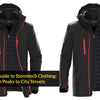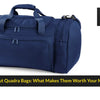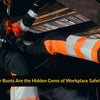Why Every Worker Should Use Ear Muffs in High-Noise Areas
- by Mike Johnson
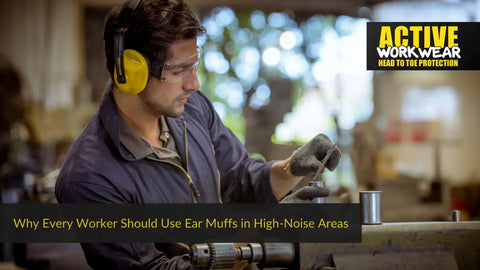
Why Every Worker Should Use Ear Muffs in High-Noise Areas
The contemporary industrial landscape is rife with noise pollution, an often-overlooked hazard that can severely affect workers' well-being. Prolonged exposure to excessive noise levels can lead to noise-induced hearing loss (NIHL), a permanent and irreversible condition that not only impairs one's ability to hear but also affects overall quality of life. In such scenarios, ear muffs emerge as a vital line of defence, safeguarding workers' hearing health and ensuring their safety in high-noise environments.
The Dangers of Noise Pollution
Noise pollution, a pervasive issue in various industries, significantly threatens workers' hearing health. NIHL occurs when the delicate hair cells within the inner ear are damaged by excessive noise exposure, leading to a gradual or sudden loss of hearing. This condition can manifest in several ways, including difficulty in understanding speech, a persistent ringing or buzzing sensation in the ears (tinnitus), and an increased need to turn up the volume on electronic devices.
While NIHL is often associated with occupations such as construction, manufacturing, and mining, where loud machinery and equipment are commonplace, it can affect workers across various sectors. Even office environments with open-plan layouts or poor acoustics can contribute to noise pollution, putting employees at risk of hearing damage over time.
The consequences of NIHL extend far beyond the physical impairment itself. Individuals with hearing loss may experience social isolation, increased stress levels, and decreased job performance, ultimately impacting their overall quality of life. Furthermore, the financial burden of treating and managing NIHL can be substantial, highlighting the importance of preventative measures.
The Role of Ear Muffs in Hearing Protection
Ear muffs are a crucial component of an effective hearing conservation program designed to reduce noise exposure and protect workers' hearing health. These devices work by enclosing the entire outer ear and creating a barrier that blocks excessive noise from reaching the inner ear.
Unlike earplugs, which are inserted directly into the ear canal, ear muffs offer a more convenient and versatile solution, particularly in environments where workers need to frequently remove and reapply their hearing protection. Additionally, ear muffs can be easily integrated with other personal protective equipment (PPE), such as hard hats or safety glasses, ensuring comprehensive protection for workers.
The effectiveness of ear muffs lies in their ability to reduce noise while maintaining a comfortable fit. High-quality ear muffs are engineered with advanced materials and technologies, ensuring a secure seal around the ear and minimising sound leakage.
Proper fit and maintenance are crucial to maximising the protective capabilities of ear muffs, as any gaps or deterioration can compromise their performance.
Introducing Our Ear Muff Range
At Active Workwear, we understand the importance of providing workers with reliable and high-performance hearing protection solutions. Our range of ear muffs is carefully curated to meet the diverse needs of various industries, ensuring optimal comfort, durability, and noise reduction capabilities.
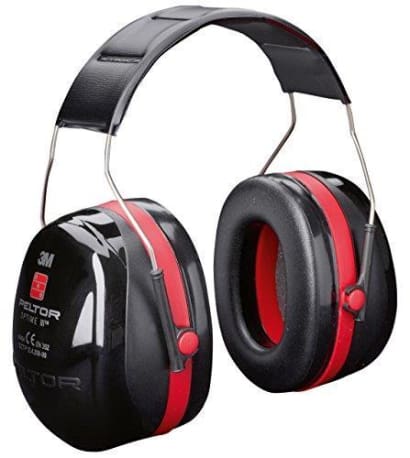

The 3M Peltor Optime 3 Headband Ear Protection Ear Muffs (H540A) are designed for use in extremely noisy environments, offering superior noise reduction with a Signal-to-Noise Ratio (SNR) of 35dB. These ear muffs feature a double-casing technology that minimises resonance, ensuring maximum high-frequency muffling while still allowing for clear speech and signal comprehension. The broad sealing rings, filled with soft plastic foam, provide an exceptional fit and low contact pressure, ensuring comfort even during extended wear.
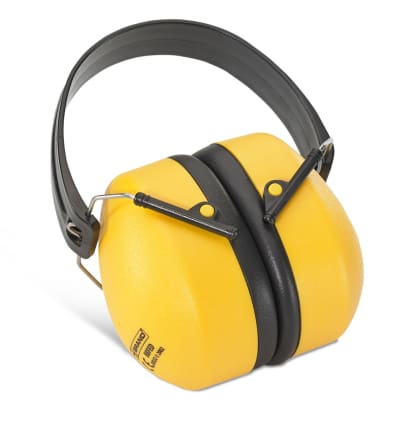

The Beeswift Folding Ear Defender Muff (Bbfed) is a versatile and cost-effective solution for hearing protection in noisy environments. Featuring an adjustable fold-away headband and self-aligned earcups, these ear muffs conform to EN352-1:2002 standards, offering an SNR of 30.4dB (H=33.0, M=27.8, L=21.3). Their compact design and foldable construction make them ideal for easy storage and transportation, ensuring convenience for workers on the go.


The 3M Peltor X4 Headband Ear Muffs (Slim) (X4A) represent the latest advancements in hearing conservation technology. These lightweight and low-profile ear muffs feature a newly designed spacer, specially formulated foam liners, and innovative ear cushions to enhance attenuation and improve compatibility with other PPE. With a Noise Reduction Rating (NRR) of 27 dB and CSA Class AL certification, the X4A is designed to protect against moderate-to-high level industrial noise and other loud sounds. The electrically insulated wire headband ensures consistent pressure distribution, while the tilting earcup pivot points provide optimum comfort and efficiency.
Choosing the Right Ear Muffs
Selecting the appropriate ear muffs is crucial for ensuring effective hearing protection in high-noise areas. The primary consideration is the noise exposure level, as different work environments may require varying degrees of noise reduction. As a general rule, aim for ear muffs with a Noise Reduction Rating (NRR) or Signal-to-Noise Ratio (SNR) that can bring the overall noise exposure level below 85 decibels (dBA), the recommended safe limit for prolonged exposure.
Additionally, factors such as comfort, durability, and compatibility with other PPE should be considered. Ear muffs that are uncomfortable or ill-fitting are more likely to be removed or worn improperly, compromising their effectiveness. Look for ear muffs with adjustable headbands, padded cushions, and lightweight designs to ensure a secure and comfortable fit throughout the workday.
Regular inspection and replacement of ear muffs are also essential to maintain their protective capabilities. Ear muffs can deteriorate over time due to wear and tear, exposure to harsh environments, or improper maintenance. Establish a routine for inspecting ear muffs for signs of damage, such as cracks, tears, or deformities, and replace them as necessary to ensure optimal performance.
The Significance of Hearing Protection in the Workplace
Hearing loss is a preventable condition, and employers have a legal and ethical responsibility to implement effective hearing conservation programs. By providing workers with high-quality ear muffs and promoting their proper use, employers can mitigate the risks associated with noise exposure and create a safer work environment.
At Active Workwear, we understand the importance of prioritising worker safety and well-being. Our range of ear muffs is designed to meet the highest quality and performance standards, ensuring that workers in various industries can confidently tackle their tasks without compromising their hearing health.
Protect your hearing with our high-quality ear muffs and take the first step towards a safer and more productive work environment. Visit our website or contact us to explore our range of hearing protection solutions and receive expert guidance on selecting the right ear muffs for your specific needs.
FAQs: Why Every Worker Should Use Ear Muffs in High-Noise Areas
1. What are the benefits of using ear muffs in high-noise areas?
Ear muffs provide superior hearing protection by blocking excessive noise and reducing the risk of noise-induced hearing loss (NIHL). They are convenient, easy to use, and can be integrated with other personal protective equipment (PPE), ensuring comprehensive safety for workers in high-noise environments.
2. How do ear muffs protect against noise-induced hearing loss (NIHL)?
Ear muffs cover the entire outer ear, creating a seal that prevents excessive noise from reaching the inner ear. By reducing the overall noise exposure, ear muffs help protect the delicate hair cells within the inner ear, preventing damage that can lead to permanent hearing loss.
3. What is the difference between ear muffs and ear plugs?
Ear muffs enclose the entire outer ear and are easier to apply and remove frequently, making them suitable for environments where workers need to move between noisy and quiet areas. Ear plugs, on the other hand, are inserted directly into the ear canal and are more discreet. Both provide effective hearing protection, but the choice depends on the user's specific needs and preferences.
4. How do I choose the right ear muffs for my work environment?
When choosing ear muffs, consider factors such as the noise level in your work environment, the Noise Reduction Rating (NRR) or Signal-to-Noise Ratio (SNR) of the ear muffs, comfort, durability, and compatibility with other PPE. Ensure that the ear muffs can reduce the noise exposure level below 85 decibels (dBA), which is the recommended safe limit for prolonged exposure.
5. How do I maintain and care for my ear muffs to ensure they remain effective?
Regularly inspect your ear muffs for signs of wear and tear, such as cracks, tears, or deformities. Clean them with a damp cloth and mild soap, and store them in a cool, dry place when not in use. Replace ear muffs that show significant damage or no longer provide an adequate seal.
6. Are there any standards that ear muffs need to meet for workplace safety?
Yes, ear muffs should comply with standards such as EN352-1:2002 in Europe or ANSI S3.19-1974 in the United States, which set the requirements for hearing protection devices. Look for ear muffs with certified ratings to ensure they provide the necessary level of protection in your work environment.



